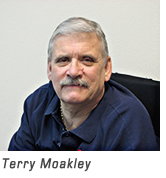 As a proud veteran who uses a wheelchair, I learned early on that there is more to life than walking. When I started working at VetsFirst back in the mid-1970s, our local public transit agency was pushing the idea of purchasing just 100 minibuses to serve all people with disabilities and aging persons. I became involved in transportation advocacy because I understood that more and better accessible transportation was needed.
As a proud veteran who uses a wheelchair, I learned early on that there is more to life than walking. When I started working at VetsFirst back in the mid-1970s, our local public transit agency was pushing the idea of purchasing just 100 minibuses to serve all people with disabilities and aging persons. I became involved in transportation advocacy because I understood that more and better accessible transportation was needed.
I can remember the very first transportation meeting that I attended. It was in July of 1976 and the meeting was held at a New York City Human Resources Administration office. This agency still exists today and it still has the same mission: to provide social services to persons in need. To put it bluntly, the HRA, as it was commonly known, was the wrong place to be talking about any improvements for people with disabilities to public transportation.
Let me re-create the inaccessible transportation picture in the “Big Apple” for you back then. There were 465 subway stations and not one was accessible to any person with a disability. There were also in excess of 4,500 public, full-size buses and none of those were accessible to disabled people either.
The only accessible vehicles that I can recall from that time was a small door-to-door transportation service operated by the Vera Institute of Justice, but it served primarily disabled and older persons who lived in the lower East side of Manhattan. That’s one neighborhood in one borough (or county) with a total of five boroughs. We needed more than 100 accessible minibuses. There were also accessible ambulettes, or medical transportation, but they were expensive and we were just disabled, and not really ill most of the time.
Then, Jimmy Carter was elected the 39th President of the United States in November of 1976. At that time and into the next year, there was a California-based company that was planning to build “the bus of the future,” known simply as the Transbus. It would be fully wheelchair-accessible. This fact helped the disabled community in New York City get galvanized and organized, and angry, knowing that an accessible full-size bus was in the offing.
In the late summer of 1977, a bunch of us got together and we blocked traffic at rush hour across First Avenue in Manhattan near the 59th St. Bridge connecting Manhattan and Queens. We demanded that New York City Transit purchase the Transbus. We made all the papers as well as many television and radio stations, but much more importantly, we made our point: people with disabilities had the same right to use public transportation as any other citizen.
In 1978, the Carter Administration issued draft regulations to implement Section 504 of the federal Rehabilitation Act. This was the first set of proposed rules where I ever saw the term “key” station used, to describe the type of existing rail station that was so important that it must be made accessible to persons with disabilities. But, that administration never finalized those rules, so when Ronald Reagan was elected our 40th President in November of 1980, these regulations simply went away.
However, more than a year earlier, our current Senior Vice-President for Legal Affairs, Jim Weisman, joined our staff and in September of 1979, this organization sued New York City Transit under two New York State laws. Five years later we won this lawsuit, but NYCT began buying wheelchair-accessible buses in 1981, manufactured by either General Motors or the Grumman Corporation. The afore-mentioned Transbus was never manufactured.
Today, as in all US communities, the bus system in New York City is fully accessible, and has been so since 1995. There are approximately 80 accessible key stations in the subway system, with more on the way. And, there are numerous accessible key stations in the Long Island Rail Road and Metro North commuter rail systems, and the New Jersey Transit and PATH systems. If you are a wheelchair user or have any other type of disability, moving around the “Big Apple” is much easier the public transit way today.
Next Installment: How I’ve used public transit to get around New York City.
Terry Moakley’s involvement in public transportation made a difference in New York City for disabled veterans. Beginning May 7, you will have an opportunity to participate in a national online dialogue sponsored by The Federal Coordinating Council on Access and Mobility and the U.S. Department of Defense. The dialogue, “Strengthening Transportation Choices So We Can Serve Those Who Have Served Their Country,” is for veterans, service members, their families, and community service providers. For more information about how to participate, please visit www.projectaction.org.
Terry Moakley
Chair of the VetsFirst Committee
